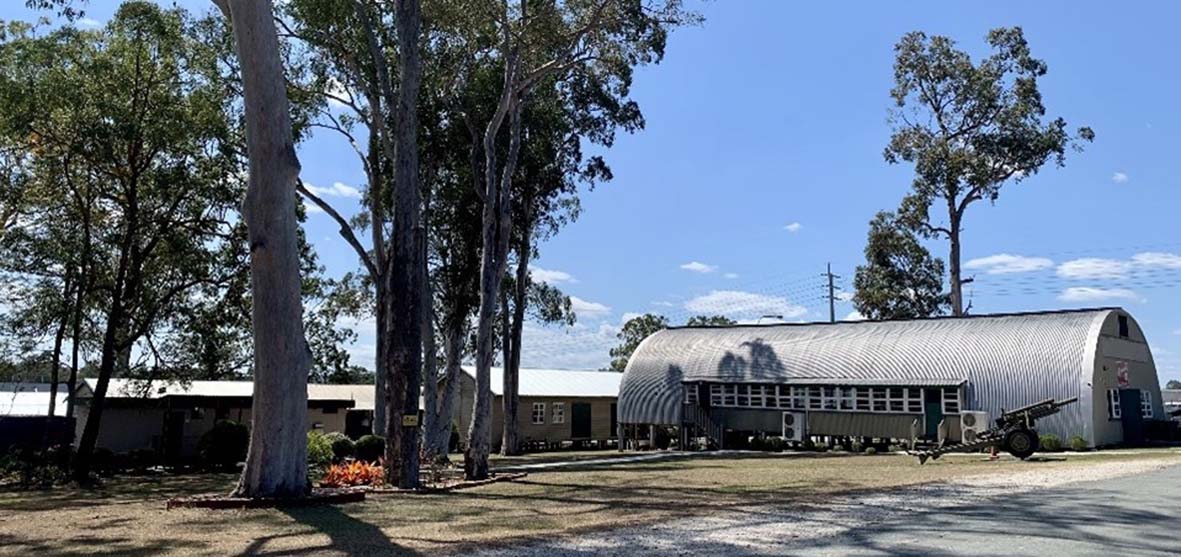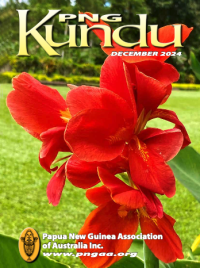The NGVR & PNGVR Association (PNGVR) Military Museum
The New Guinea Volunteer Rifles (NGVR) and the Papua New Guinea Volunteer Rifles Association (PNGVR) Military Museum was established in 2005 within the Wacol Military Heritage Precinct as a lasting tribute to NGVR and a memorial to the men who were lost in the Pacific War. The Museum is a community facility for the benefit of future generations.
The museum building is a refurbished wartime building that was originally a part of Camp Columbia. It was established in 1942 for the Sixth US Army Headquarters, the main Allied Staging Camp for the war in the southwest Pacific. During the years 1944 to 1947, the camp was taken over by the Netherlands East Indies Government in exile, the first time a foreign government was hosted on Australian soil. After the war, parts of the camp were used by the Australian military, and they served as a migrant reception and training area.
From 1951, it was used by the 11 Training Battalion of the Australian National Service and later for the support of the Australian Citizen Military Forces. The Camp was sold circa 2000, with 1.5ha set aside for Military Heritage purposes. Five historic military buildings from the camp were established there, and the precinct was transferred to the National 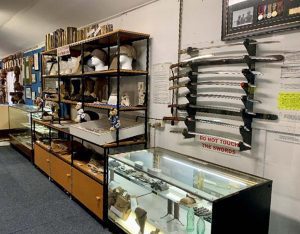 Servicemen Association of Australia (Qld) (NSAAQ).
Servicemen Association of Australia (Qld) (NSAAQ).
The PNGVR refurbished the WWII building, adding an extension, air conditioning, a secure weapons vault and a pedestrian access ramp. Military displays and presentations about the NGVR’s wartime activities and other campaigns in the PNG Archipelago were installed and maintained, as well as a wide and large collection of military memorabilia and PNG artefacts, which had been acquired by donation or loan. The security of the precinct is ensured with a security fence with monitored cameras, etc. The museum has links to the Victoria Barracks and MacArthur Museums in Brisbane. The costs of maintaining the Museum are borne by the PNGVR.
The strength of the Museum is that it is maintained with relevant displays of events, artifacts, records, photographs and memorabilia. A range of Japanese and Allied weapons and ordinance is displayed, from 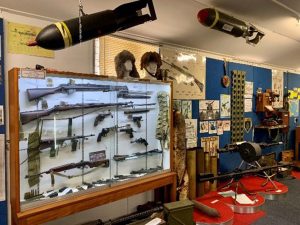 Japanese Samurai Swords, a Juki (Woodpecker) machine gun, a Nambu pistol and 20mm Zero fighter aircraft’s cannon to Australian and US rifles, machine guns and pistols, all of which are popular with younger visitors. Other unusual items include a tele-radio used by Coastwatchers, a handkerchief of an Australian soldier lost on the Montevideo Maru, a small, wheeled cart for use in the jungle, an air-raid siren, various helmets and uniforms, and many more important and mundane items used by the military. Donations or loans of appropriate items are welcomed, with the assurance they will be properly and securely looked after. Should a bequest be considered, please speak with the curator.
Japanese Samurai Swords, a Juki (Woodpecker) machine gun, a Nambu pistol and 20mm Zero fighter aircraft’s cannon to Australian and US rifles, machine guns and pistols, all of which are popular with younger visitors. Other unusual items include a tele-radio used by Coastwatchers, a handkerchief of an Australian soldier lost on the Montevideo Maru, a small, wheeled cart for use in the jungle, an air-raid siren, various helmets and uniforms, and many more important and mundane items used by the military. Donations or loans of appropriate items are welcomed, with the assurance they will be properly and securely looked after. Should a bequest be considered, please speak with the curator.
The Association welcomes anyone wishing to assist the Museum. If we had more volunteers, the Museum could be open more regularly, and a roster organised. A volunteer doesn’t need to be an association member but does need an aptitude for the work and is prepared to become immersed in PNG history, 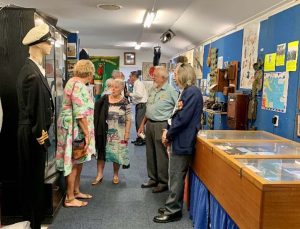 particularly military history. To ensure the continuity of the Museum as a community facility, a succession plan is being implemented with Forest Lake RSL Sub-branch, which is situated next door. The handover will be accomplished over time.
particularly military history. To ensure the continuity of the Museum as a community facility, a succession plan is being implemented with Forest Lake RSL Sub-branch, which is situated next door. The handover will be accomplished over time.
The Museum is promoted widely, and many community adult and children groups regularly visit. The Museum is open to the public from 10 am to 1 pm on the first Saturday of every month by appointment only by contacting the curator, Paul Brown, on 0402 644 181.
The limited visiting time is due to the dedication of only a few PNGVR members who live reasonably close to the Museum.
The museum’s address is 971 Boundary Road, Wacol, Brisbane, Qld 4076.
Access is from the rear off Nashos Place.
(Photos courtesy of Phil Ainsworth)


